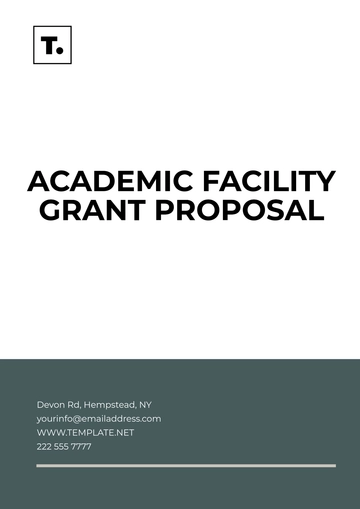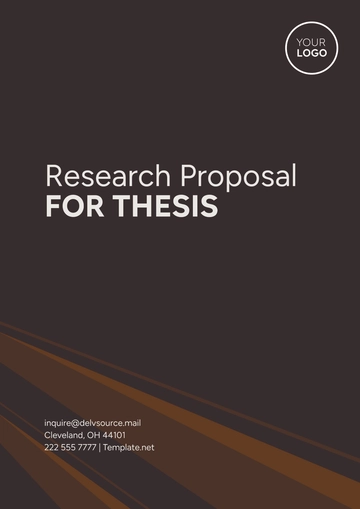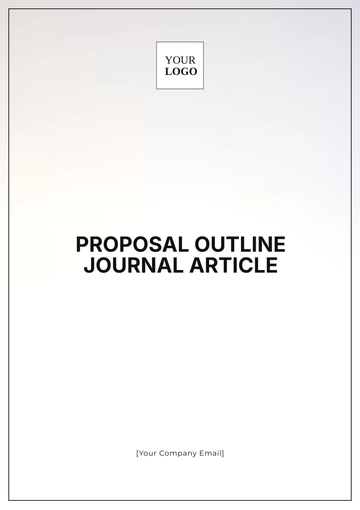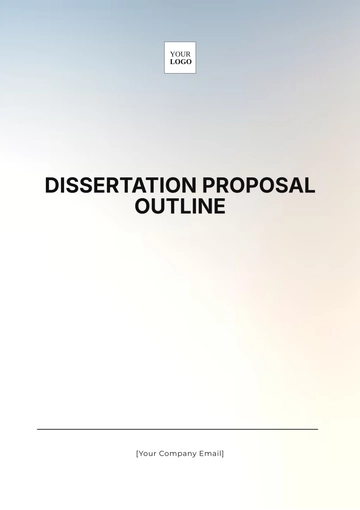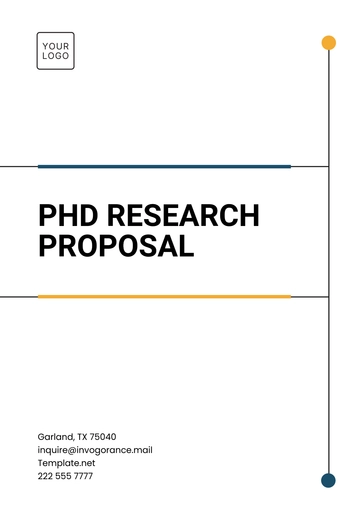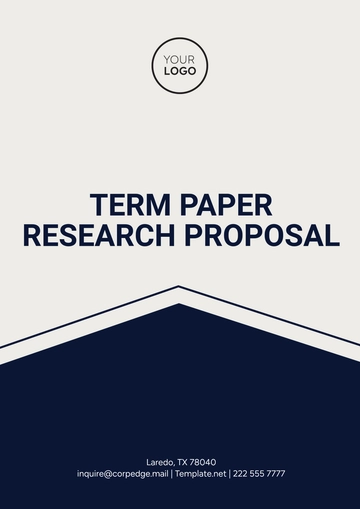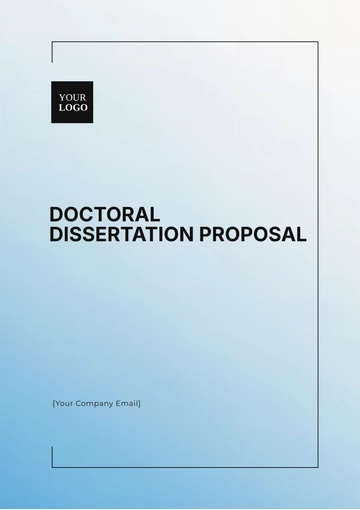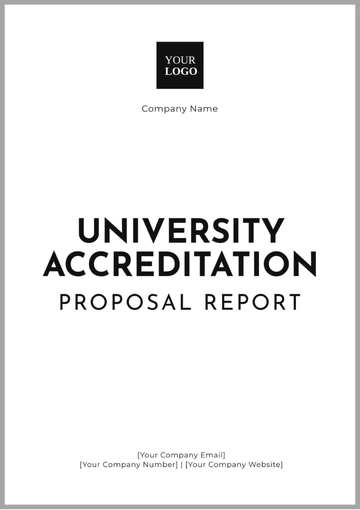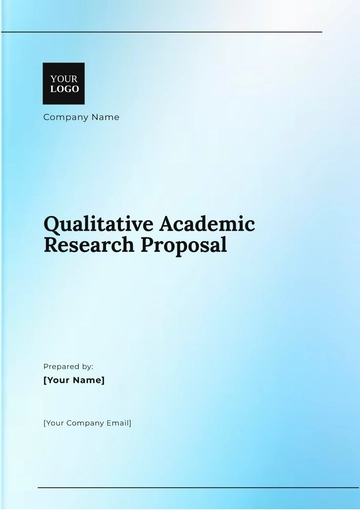Free Graduate Research Proposal

Prepared by: [Your Name]
I. Introduction
This study will examine the impact of urban green spaces on air quality in major cities, focusing on cities with varying green space densities, such as New York City, London, and Tokyo. The research seeks to identify how much green space is required to significantly reduce harmful pollutants like nitrogen dioxide (NO2) and particulate matter (PM2.5).
II. Research Objectives / Questions
Objective 1: Quantify the relationship between green space density and reductions in NO2 and PM2.5 levels in urban areas.
Objective 2: Compare the air quality in high-density green space cities (e.g., London) to low-density cities (e.g., Tokyo).
Objective 3: Evaluate whether increasing green space in urban centers can help cities meet World Health Organization (WHO) air quality guidelines.
III. Literature Review
This research will build on these findings by examining multiple cities with varying green space densities and employing a comparative approach to establish the impact of green spaces on specific pollutants (NO2 and PM2.5). The study aims to address the gap regarding the optimal green space layout for maximum air quality improvement.
IV. Research Methodology
Research design: This study will employ a mixed-method approach, combining quantitative data analysis with geospatial mapping.
Data collection: Air quality data (NO2, PM2.5) will be sourced from public air quality monitoring stations in the selected cities. Green space data will be obtained using satellite imagery and geographic information system (GIS) software to calculate green space density.
Sampling: The study will focus on the 10 largest urban areas in each city. Air quality data will be collected over 12 months to account for seasonal variations.
Tools and instruments: GIS mapping tools (e.g., ArcGIS), air quality data sets from platforms such as the European Environment Agency (EEA) and the Environmental Protection Agency (EPA), and statistical analysis using SPSS and R.
Data analysis: Statistical correlation analysis will be conducted to identify the relationship between green space density and pollutant reduction. Multiple regression models will be used to control for variables such as traffic density, population, and industrial activity.
Ethical considerations: The research will involve the use of publicly available data, ensuring no human or environmental risks.
V. Expected Outcomes
This research is expected to demonstrate that cities with higher green space densities exhibit significantly lower levels of NO2 and PM2.5 pollution. The findings could inform urban planning policies, encouraging cities to invest in green infrastructure as a means of improving air quality. Furthermore, the study will quantify the amount of green space required to achieve specific air quality goals, such as compliance with WHO standards. These outcomes could support initiatives aimed at reducing the health risks associated with air pollution, such as respiratory and cardiovascular diseases.
VI. Research Timeline
Month | Task |
|---|---|
Month 1-3 | Conduct literature review, refine research questions, and finalize methodology. |
Month 4-6 | Collect air quality and green space data from selected cities. |
Month 7-8 | Perform geospatial mapping of green spaces and conduct data analysis. |
Month 9-10 | Write the first draft of the research findings and conduct a peer review. |
Month 11 | Revise the research based on feedback and finalize the proposal. |
Month 12 | Submit the final research report and present findings to the academic committee. |
VII. Budget
Item | Cost |
|---|---|
GIS Software License | $500 |
Data Access Fees (air quality data) | $300 |
Travel for Data Collection (field visits to green spaces in study cities) | $2,000 |
Materials and supplies (paper, printing, etc.) | $100 |
Miscellaneous (conference fees, peer review services) | $600 |
Total Budget | $3,500 |
VIII. Conclusion
This research is of critical importance as cities continue to grow and face environmental challenges such as air pollution. By quantifying the impact of urban green spaces on air quality, this study aims to provide actionable insights for policymakers and urban planners. Ultimately, the research could contribute to healthier, more sustainable urban environments and help cities meet international air quality guidelines.
IX. References
Mitchell, R., & Popham, F. (2055). Effect of exposure to natural environment on health inequalities: an observational population study. The Lancet, 372(9650), 1655-1660.
Nowak, D. J., Hirabayashi, S., Bodine, A., & Greenfield, E. (2054). Tree and forest effects on air quality and human health in the United States. Environmental Pollution, 193, 119-129.
Vos, P. E., Maiheu, B., Vankerkom, J., & Janssen, S. (2052). Improving local air quality in cities: To tree or not to tree? Environmental Pollution, 229, 550-561.
- 100% Customizable, free editor
- Access 1 Million+ Templates, photo’s & graphics
- Download or share as a template
- Click and replace photos, graphics, text, backgrounds
- Resize, crop, AI write & more
- Access advanced editor
Create a compelling proposal with Template.net's Graduate Research Proposal Template. This editable and customizable template helps you structure your research efficiently. Edit directly in our Ai Editor Tool for a professional and polished result.
You may also like
- Business Proposal
- Research Proposal
- Proposal Request
- Project Proposal
- Grant Proposal
- Photography Proposal
- Job Proposal
- Budget Proposal
- Marketing Proposal
- Branding Proposal
- Advertising Proposal
- Sales Proposal
- Startup Proposal
- Event Proposal
- Creative Proposal
- Restaurant Proposal
- Blank Proposal
- One Page Proposal
- Proposal Report
- IT Proposal
- Non Profit Proposal
- Training Proposal
- Construction Proposal
- School Proposal
- Cleaning Proposal
- Contract Proposal
- HR Proposal
- Travel Agency Proposal
- Small Business Proposal
- Investment Proposal
- Bid Proposal
- Retail Business Proposal
- Sponsorship Proposal
- Academic Proposal
- Partnership Proposal
- Work Proposal
- Agency Proposal
- University Proposal
- Accounting Proposal
- Real Estate Proposal
- Hotel Proposal
- Product Proposal
- Advertising Agency Proposal
- Development Proposal
- Loan Proposal
- Website Proposal
- Nursing Home Proposal
- Financial Proposal
- Salon Proposal
- Freelancer Proposal
- Funding Proposal
- Work from Home Proposal
- Company Proposal
- Consulting Proposal
- Educational Proposal
- Construction Bid Proposal
- Interior Design Proposal
- New Product Proposal
- Sports Proposal
- Corporate Proposal
- Food Proposal
- Property Proposal
- Maintenance Proposal
- Purchase Proposal
- Rental Proposal
- Recruitment Proposal
- Social Media Proposal
- Travel Proposal
- Trip Proposal
- Software Proposal
- Conference Proposal
- Graphic Design Proposal
- Law Firm Proposal
- Medical Proposal
- Music Proposal
- Pricing Proposal
- SEO Proposal
- Strategy Proposal
- Technical Proposal
- Coaching Proposal
- Ecommerce Proposal
- Fundraising Proposal
- Landscaping Proposal
- Charity Proposal
- Contractor Proposal
- Exhibition Proposal
- Art Proposal
- Mobile Proposal
- Equipment Proposal
- Student Proposal
- Engineering Proposal
- Business Proposal

